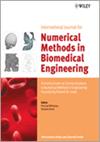Á. Horváth
{"title":"大应变J积分的计算","authors":"Á. Horváth","doi":"10.1002/CNM.1069","DOIUrl":null,"url":null,"abstract":"The phenomenon of failure by catastrophic crack propagation in structural materials poses problems of design and analysis in many fields of engineering. Cracks are present to some degree in all structures. They may exist as basic defects in the constituent materials or they may be induced in construction or during service life. \n \n \n \nUsing the finite element method, a lot of papers deal with the calculation of stress intensity factors for two- and three-dimensional geometries containing cracks of different shapes under various loadings to elastic bodies. In order to increase the accuracy of the results, special elements have been used. They are described together with methods for calculating the stress intensity factors from the computed results. \n \n \n \nAt the vicinity of a crack tip, the strains are not always small, but they may also be large. In this case, the J-integral can also be applied to characterize the cracks in elastic or elastic–plastic bodies. \n \n \n \nThis paper describes the computation of the two-dimensional J-integral for large strains to elastic and elastic–plastic bodies and represents some numerical examples. Copyright © 2007 John Wiley & Sons, Ltd.","PeriodicalId":51245,"journal":{"name":"Communications in Numerical Methods in Engineering","volume":"24 1","pages":"1811-1825"},"PeriodicalIF":0.0000,"publicationDate":"2007-11-09","publicationTypes":"Journal Article","fieldsOfStudy":null,"isOpenAccess":false,"openAccessPdf":"https://sci-hub-pdf.com/10.1002/CNM.1069","citationCount":"1","resultStr":"{\"title\":\"Computation of the J‐integral for large strains\",\"authors\":\"Á. Horváth\",\"doi\":\"10.1002/CNM.1069\",\"DOIUrl\":null,\"url\":null,\"abstract\":\"The phenomenon of failure by catastrophic crack propagation in structural materials poses problems of design and analysis in many fields of engineering. Cracks are present to some degree in all structures. They may exist as basic defects in the constituent materials or they may be induced in construction or during service life. \\n \\n \\n \\nUsing the finite element method, a lot of papers deal with the calculation of stress intensity factors for two- and three-dimensional geometries containing cracks of different shapes under various loadings to elastic bodies. In order to increase the accuracy of the results, special elements have been used. They are described together with methods for calculating the stress intensity factors from the computed results. \\n \\n \\n \\nAt the vicinity of a crack tip, the strains are not always small, but they may also be large. In this case, the J-integral can also be applied to characterize the cracks in elastic or elastic–plastic bodies. \\n \\n \\n \\nThis paper describes the computation of the two-dimensional J-integral for large strains to elastic and elastic–plastic bodies and represents some numerical examples. Copyright © 2007 John Wiley & Sons, Ltd.\",\"PeriodicalId\":51245,\"journal\":{\"name\":\"Communications in Numerical Methods in Engineering\",\"volume\":\"24 1\",\"pages\":\"1811-1825\"},\"PeriodicalIF\":0.0000,\"publicationDate\":\"2007-11-09\",\"publicationTypes\":\"Journal Article\",\"fieldsOfStudy\":null,\"isOpenAccess\":false,\"openAccessPdf\":\"https://sci-hub-pdf.com/10.1002/CNM.1069\",\"citationCount\":\"1\",\"resultStr\":null,\"platform\":\"Semanticscholar\",\"paperid\":null,\"PeriodicalName\":\"Communications in Numerical Methods in Engineering\",\"FirstCategoryId\":\"1085\",\"ListUrlMain\":\"https://doi.org/10.1002/CNM.1069\",\"RegionNum\":0,\"RegionCategory\":null,\"ArticlePicture\":[],\"TitleCN\":null,\"AbstractTextCN\":null,\"PMCID\":null,\"EPubDate\":\"\",\"PubModel\":\"\",\"JCR\":\"\",\"JCRName\":\"\",\"Score\":null,\"Total\":0}","platform":"Semanticscholar","paperid":null,"PeriodicalName":"Communications in Numerical Methods in Engineering","FirstCategoryId":"1085","ListUrlMain":"https://doi.org/10.1002/CNM.1069","RegionNum":0,"RegionCategory":null,"ArticlePicture":[],"TitleCN":null,"AbstractTextCN":null,"PMCID":null,"EPubDate":"","PubModel":"","JCR":"","JCRName":"","Score":null,"Total":0}
引用次数: 1
Computation of the J‐integral for large strains
The phenomenon of failure by catastrophic crack propagation in structural materials poses problems of design and analysis in many fields of engineering. Cracks are present to some degree in all structures. They may exist as basic defects in the constituent materials or they may be induced in construction or during service life.
Using the finite element method, a lot of papers deal with the calculation of stress intensity factors for two- and three-dimensional geometries containing cracks of different shapes under various loadings to elastic bodies. In order to increase the accuracy of the results, special elements have been used. They are described together with methods for calculating the stress intensity factors from the computed results.
At the vicinity of a crack tip, the strains are not always small, but they may also be large. In this case, the J-integral can also be applied to characterize the cracks in elastic or elastic–plastic bodies.
This paper describes the computation of the two-dimensional J-integral for large strains to elastic and elastic–plastic bodies and represents some numerical examples. Copyright © 2007 John Wiley & Sons, Ltd.

 求助内容:
求助内容: 应助结果提醒方式:
应助结果提醒方式:


